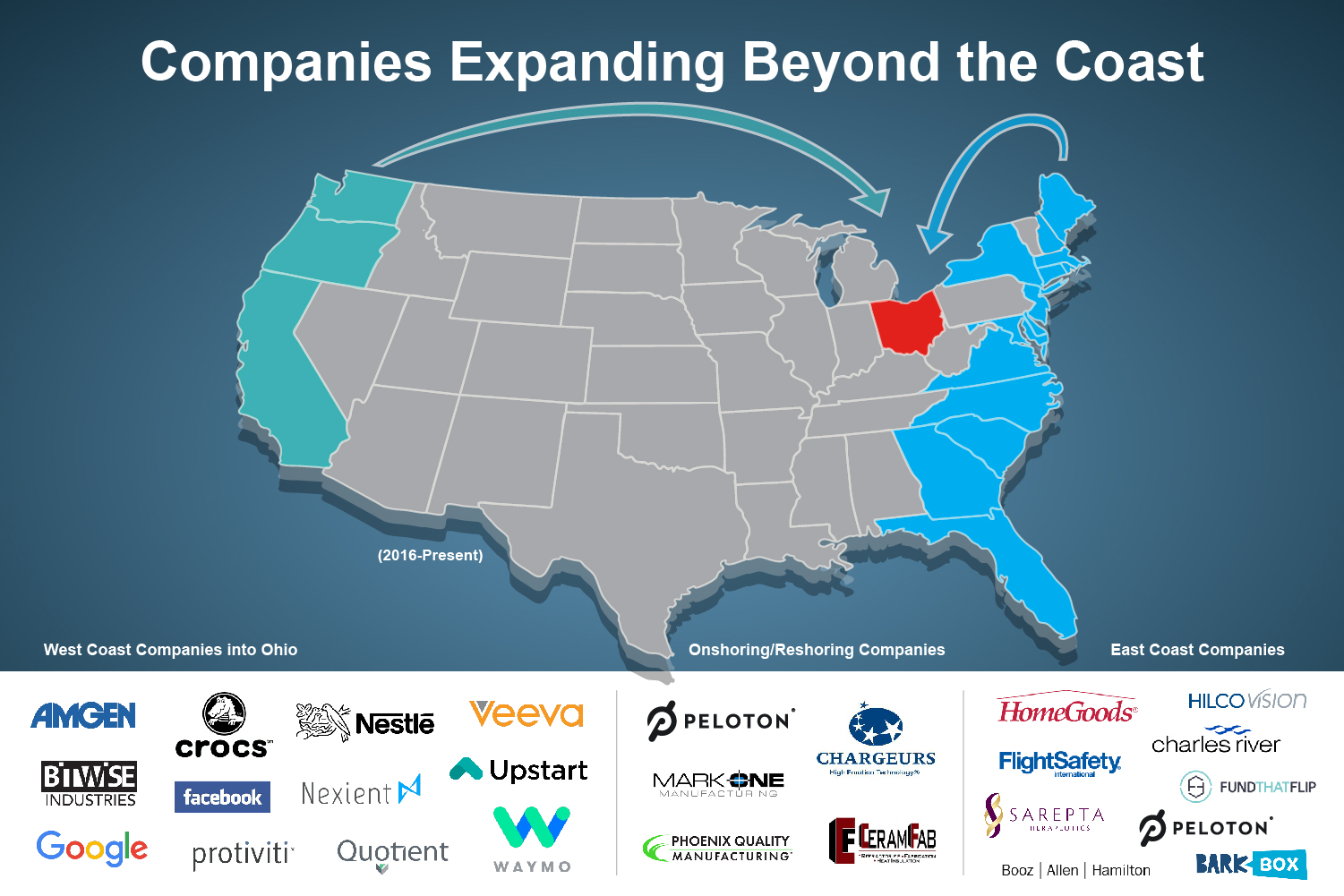For years these coastal areas have seemed “the place to be” for opportunities. But high costs of living and doing business and population problems are influencing citizens to look for other options.
Times have changed. The COVID-19 pandemic influenced a lot of businesses to re-evaluate how they operate and where they’re investing capital. Now, these companies realize they can be globally successful outside of more expensive coasts.
The COVID-19 pandemic has coincided with more do-it-yourself movers leaving densely populated U.S. areas, specifically New York City and the San Francisco Bay Area, according to a U-Haul® special report analyzing migration trends from 2020. Since 2016, over 40 new companies, nearly 10,000 jobs, and $625M in payroll have come to Ohio from the coasts.
“We’re thrilled to hire talented and passionate people who can fuel our growth and expansion as we continue to scale rapidly,” said Grant Schneider, head of Upstart Columbus, “and central Ohio has demonstrated that it has many such people!”
Ohio’s Compared Affordability
In Ohio, every dollar goes further without sacrificing quality. Ohio is No. 1 most affordable state, according to the 2020 U.S. News rankings. The cost of living in Ohio’s significant cities is 42-70% lower than San Francisco and New York City. Ohio Ranks No. 3 in Moody’s Housing Affordability Index measures the great combination of higher median income and lower housing price, providing a good quality of life (2020, Q3).
Moving from the West Coast and California
From 2000 to 2020, California experienced a net loss of 2.6 million people to other U.S. states. There were also more relocations in the first half of 2021 than in all of 2018 or 2020. Reported relocations slowed down during the pandemic, but they are accelerating as the economy looks toward recovery.
And the destination for these relocations? The Midwest and Ohio. According to a data analysis by Consumer Affairs, the largest group moving to Ohio is Californians, with Florida and Texas in second and third, respectively.

West Coast Coming to Ohio:
- 29 companies
- 5,000+ jobs
- $360M+ in payroll
- Notable companies include Amgen, Bitwise Industries, Crocs, Facebook, Google, Nestle, Nexient, Protiviti, Quotient, Upstart, Veeva Systems, and Waymo.
Moving from the East Coast and New York City
The Consumer Affairs data analysis notes that California has lost more people in the last two decades than any state except New York. Like San Francisco, New York City welcomed more self-movers than it bid farewell in 2019. That migration trend reversed in 2020. From March to June 2020, arrivals to New York City plummeted 58% year-over-year, while departures were curbed only by limited fleet inventory as trucks left the city.
East Coast Coming to Ohio:
- 12 companies
- 4,850+ jobs
- $260M+ in payroll
- Notable companies include BarkBox, Booz Allen Hamilton, Charles River Labs, FlightSafety International, Fund That Flip Hilco Vision, HomeGoods, Sarepta Therapeutics
Onshoring and Reshoring
The pandemic has exposed America’s overreliance on foreign nations for critical goods. Lack of manufacturing capacity, broken supply chains, and ineffective stockpiles led to essential goods shortages when supplies were needed.
In a recent report from the nonprofit institute Heartland Forward entitled Reshoring America: Can the Heartland Lead the Way? ‘reshoring’ is defined as “the return of manufacturing, outsourced personnel, and services from overseas back to the United States where the products and services are sold.” Onshoring is bringing manufacturing to the U.S. from other countries. Both are happening.
Companies including Mark One Manufacturing, CeramFab/WYG Refractories, The Chargeurs Group, and Phoenix Quality Manufacturing have turned to Ohio for onshoring/reshoring.
Ohio offers an open, secure, cost-effective home for the supply chain. Furthermore, Ohio’s business environment attracts global investment with a simple tax structure, central location, and a legacy of manufacturing expertise.
People and businesses are migrating to Ohio because they see the value in Ohio’s opportunities, understanding that sometimes success is more attainable and sustainable in the “heartland” of the U.S.